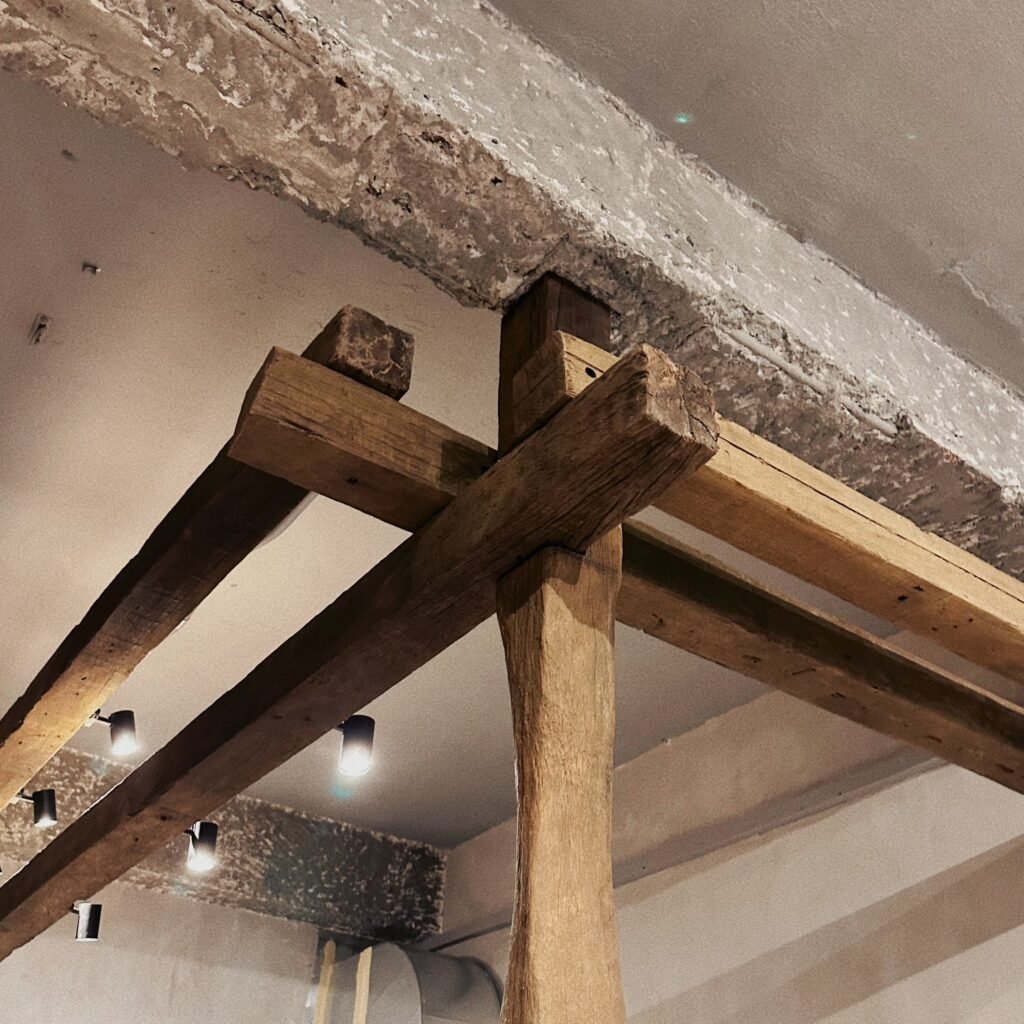When it comes to Japanese-style interiors, what kind of home environment do you envision? Is it the traditional wooden tones with tatami mats, representing the serene Japanese Zen style? Or perhaps the minimalistic and practical storage-focused approach of the MUJI Japanese style? Then there’s the popular Wabi-Sabi style in recent years. In fact, these interior design styles all embody the essence of Japanese lifestyle habits and societal culture but have developed their own distinct elements, leaving varying impressions of Japanese style in people’s minds.
A common issue in interior design is envisioning a Nordic style initially but realizing a preference for Japanese style later on, or collecting numerous reference photos of Japanese-style interiors, only to discover, after consulting with a designer, that a modern style might suit better due to budget and lifestyle. To avoid this back-and-forth and mental strain, it’s worth understanding one’s perfect match in interior design style beforehand.
This article consolidates the differences between Japanese, Nordic, and modern styles, categorizes Japanese style, and outlines the distinctive design elements associated with it. It serves as a comprehensive reference for those seeking insights into these various interior design approaches.
Key contents of this article:
Differences between Japanese, Nordic, and Modern Styles
Misunderstandings may occur when conversing with designers or contractors about interior design styles, particularly in relation to Japanese, Nordic, and Modern styles, which are often confused. However, it is important to recognize that these styles possess distinct characteristics. Familiarizing oneself with their origins and design elements can help clarify their aesthetic disparities.
Japanese style interiors have a strong association with Japanese architecture, embodying the reserved aesthetics unique to Eastern culture. It predominantly represents the Japanese Zen style. Incorporating natural building materials and bonsai flora, Japanese style emphasizes a serene and unassuming living environment through soft, warm color palettes and reduced contrasting colors. Elements like natural wood, tatami mats, and wooden lattice grids are distinct features of Japanese style.
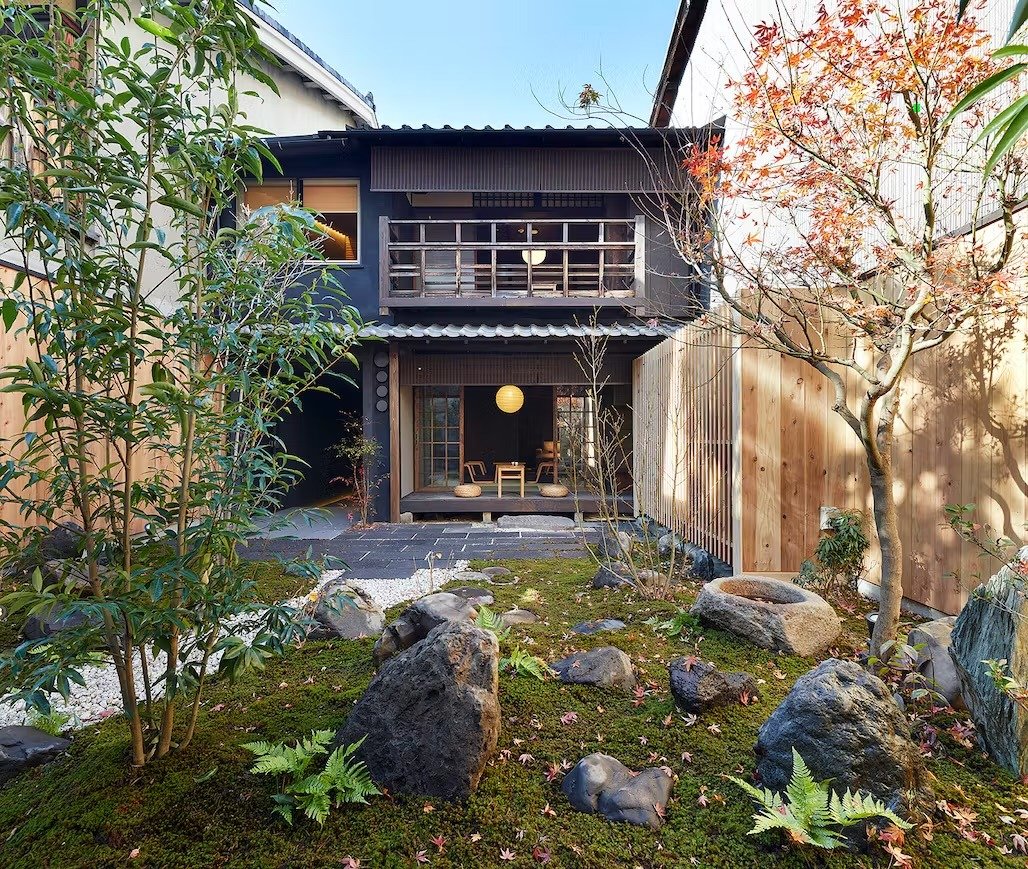
The traditional Japanese style in interior and exterior design incorporates a substantial amount of natural building materials and bonsai floral arrangements. #Archinect
Scandinavian style, which hails from countries such as Norway and Sweden, prioritizes light and natural materials due to the limited sunlight and geographical conditions of the region. Nordic interior decor centers around clean and practical design principles. In contrast to Japanese style, Scandinavian interiors incorporate more metal elements and color contrasts, creating a visually vibrant ambiance.

Unlike Japanese style, Nordic design tends to incorporate a greater variety of contrasting paint colors.
Modern style, deeply rooted in the principles of Bauhaus, embodies rationality, simplicity, and functionality. This concept influences contemporary interior design with features like clean geometric lines, high-transparency glass partitions, single-toned wall paints, and concealed storage designs. Generally cooler in color tones compared to Japanese and Nordic styles, Modern style exudes a sophisticated yet reserved ambiance.

Modern style interiors typically lean towards cooler color palettes compared to Japanese style, exuding a sense of sophistication.
Of course, many people now opt to blend various design elements or propose similar yet distinct aesthetic interpretations in interior decoration. Styles such as Japanese Minimalist, Japanese Ultra-Minimalist, Nordic Industrial, Nordic Ultra-Minimalist, Modern Nordic, and Modern Minimalist, amalgamate the strengths of different categories. Thus, while Japanese, Nordic, and similar styles serve as foundational discussions for interior design, the actual decor can timely incorporate the desired design elements as needed.
Japanese Style Interior Design: Exploring 3 Categories – Zen, Muji, Wabi-Sabi
When it comes to Japanese-style interior design, everyone might conjure different images in their minds. Zen, Muji, and Wabi-Sabi are like three sisters, sharing similarities yet having distinct differences. However, the earliest to emerge was the Zen style, followed by the Muji style led by the brand “Muji,” and more recently, the return of the Wabi-Sabi style from Europe and America to Asia. These styles are not entirely distinct but rather represent the evolution of Japanese culture, each showcasing unique characteristics.
The Zen style in Japanese interior design is deeply influenced by the Zen Buddhism philosophy, emphasizing the understanding of Zen through natural landscapes. Therefore, common features of Japanese Zen style include garden plantings, tatami rooms, aiming to evoke a sense of inner peace for the residents. On the other hand, the Muji style originates from the brand “Muji,” focusing on simple and functional furniture and décor, beloved by many middle-class and small families, and remaining popular for several years.
As for the emergence of the Wabi-Sabi style, although it’s related to Zen Buddhist philosophy and Japanese tea culture, it has gradually become a burgeoning interior design style in recent years due to its endorsement and application by interior designers in Europe and America. However, the most significant difference between Wabi-Sabi and Zen styles lies in the incorporation of minimalist and Western aesthetic perspectives. Therefore, compared to the deeply-rooted traditional Japanese Zen style, Wabi-Sabi is still in its early stages, and designers are gradually exploring and cultivating the essence of the Wabi-Sabi style.
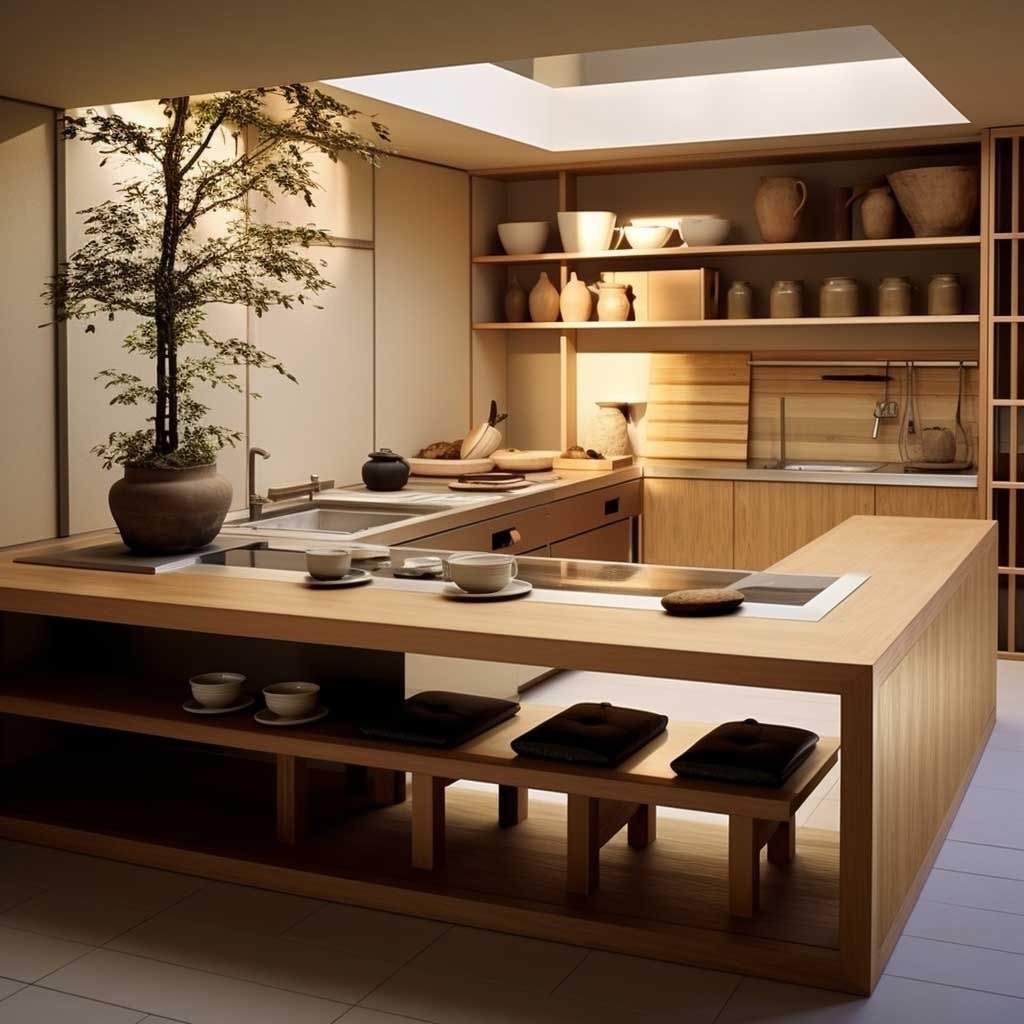
Japanese-style interior design highly pursues a natural atmosphere indoors.
Distinctive Elements of Japanese Zen Style Interior Design
All Japanese interior styles place a strong emphasis on the use of wood, but particularly in Japanese Zen design, wood is employed to its fullest extent. From partition screens to furniture and home decor, natural building materials serve as the soul of Japanese Zen interior design, infusing spaces with earthy tones. Moreover, each detail of the interior design is a testament to artisanal craftsmanship. Here are some common elements of Japanese Zen style for reference:
- Wooden lattice screens
- Shoji doors
- Tatami mat flooring in the traditional room
- Tea tables with cushions
- Bonsai garden arrangements
Wooden Lattice Screens
Wooden lattice screens are a prevalent element in Japanese Zen design. Whether used in lightweight partitions, sliding doors, TV wall decorations, cabinet doors for storage units, or even integrated into ceiling designs, they bring about a distinctive sense of three-dimensional depth. When applied in lightweight partitions or sliding doors, they facilitate variations in light and shadow, ensuring good ventilation while fostering the unique aesthetics of Japanese-style interior design.

Showcasing a strong Japanese style.
Shoji Doors
Shoji doors are a common form of sliding doors found in Japanese Zen design. These doors feature panels made of shoji paper, crafted from natural pulp, linen, silk, and synthetic fibers. This material is difficult to tear, resistant to discoloration, and possesses qualities such as natural ventilation, moisture absorption, warmth retention, and gentle translucency. It’s considered one of the most classic artisanal materials in Japanese-style design.
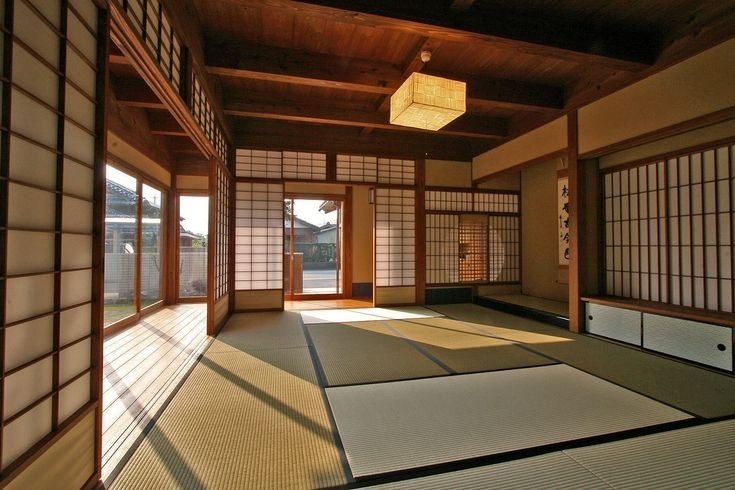
Decorating sliding doors with shoji paper is a classic artisanal material commonly seen in Japanese-style design.
Tatami Mats and Traditional Japanese Rooms
Tatami mats are versatile furniture used for sitting or sleeping and are commonly found in traditional Japanese-style rooms. Traditionally, tatami mats were woven using igusa (soft rush straw), but nowadays, some are made using wood shavings or polystyrene foam. As a quick side note, in Japanese architectural measurements, the unit ‘tatami’ or ‘jo’ is often used to calculate room size. One ‘jo’ is equivalent to the size of two tatami mats placed together in a square, approximately 3.3 square meters.

Tatami mats, versatile furniture suitable for sitting or sleeping, are frequently found in traditional Japanese-style rooms.
Tea Tables with Cushions
In traditional Japanese social culture, sitting on the floor was customary. Hence, the tea table and cushions in Japanese-style settings became classic furniture arrangements. However, with changing times, sofas and armchairs have become the mainstay in living rooms. As a result, the tea tables and cushions of Japanese Zen design are now more commonly found in tatami mat rooms, showcasing the distinctive charm of traditional Japanese-style interior design within specific spaces.

Japanese Zen style often incorporates tea tables and floor cushions, aligning with the traditional practice of sitting on the floor.
Japanese Garden Bonsai
Landscaped gardens are among the most iconic design elements in Japanese-style aesthetics. While modern apartment complexes often lack outdoor spaces for creating beautiful landscapes, enthusiasts of Japanese Zen design need not worry. They can opt for indoor tabletop bonsai arrangements, typically featuring miniature pine trees or other symbolic focal pieces, which can emanate a strong sense of Japanese style and ambiance within interior spaces.

Japanese Zen style allows for the placement of natural bonsai arrangements featuring miniature pine trees on tabletops and surfaces.
Japanese Muji Style Interior Design Characteristics
As previously mentioned, the Japanese Muji style originates from the brand ‘Muji,’ akin to Japanese Zen design in its extensive use of wood. However, Muji style places a greater emphasis on minimalist spaces and ample natural light. In terms of color schemes used in furniture arrangements, Muji style tends to be lighter compared to Japanese Zen style. It also prioritizes practical storage functionality. Common design elements of the Muji style include:
- Wooden flooring
- Glass materials
- Unfinished wood furniture
- Cotton and linen fabrics
- Stylish storage solutions
Wooden Florring
Wooden flooring stands out as a distinctive feature in Japanese Muji style design, encompassing solid wood flooring, laminate flooring, and highly durable wood flooring. It finds application in various interior spaces adhering to the Muji style, such as living rooms, dining areas, and bedrooms. However, it’s worth noting that having wooden flooring alone is not sufficient to define Muji style; it’s just one of the defining criteria.
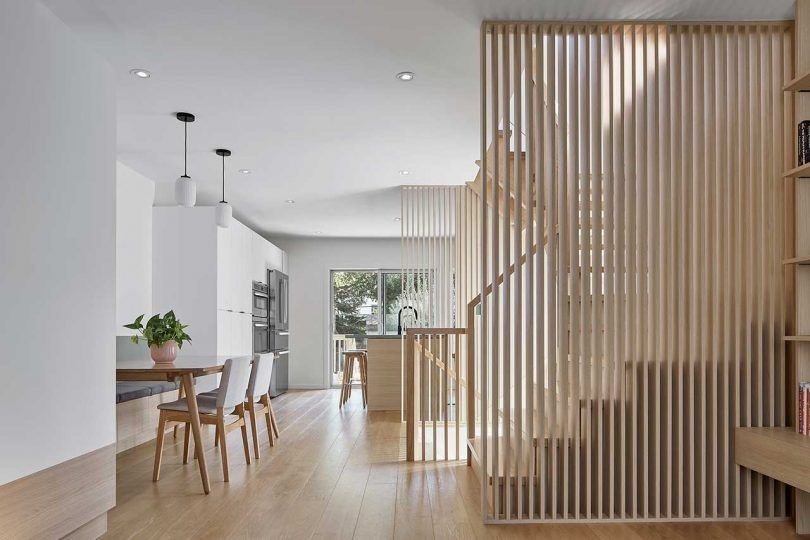
Japanese Muji style combines hexagonal tiles with wooden flooring to create a diverse aesthetic within interior spaces.
Glass materials
Japanese Muji style places a strong emphasis on bright interior lighting, often incorporating glass materials to facilitate the free flow of light. For instance, glass sliding doors and screens stand out as representative design elements. These elements, to some extent, replace the traditional shoji doors commonly found in Japanese Zen style, lending a more modern, practical, and clean aspect to the design, presenting a different facet of the Japanese style.
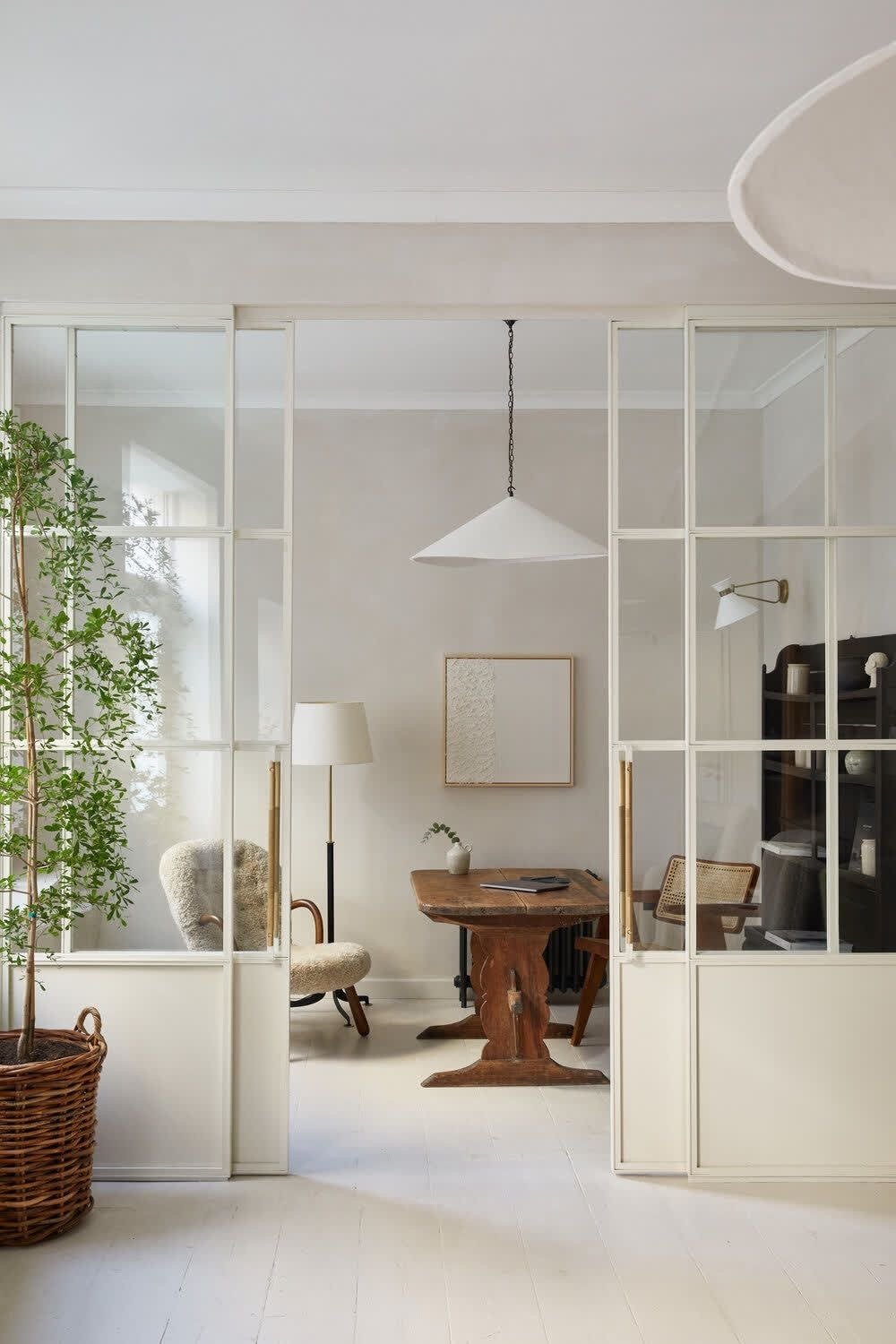
Glass partitions and sliding doors amplify the sense of space within Muji-style study rooms.
Unfinished wood furniture
One key aspect of achieving the Japanese Muji style involves selecting what’s known as ‘solid wood’ furniture. This concept originates from Japan and refers to furniture made directly from cut raw timber without the use of adhesives. However, solid wood furniture typically comes at a higher cost compared to veneer styles. For those with limited budgets, prioritizing larger pieces of furniture such as dining tables or desks can be a practical approach.

Japanese Muji style often leans towards wooden designs for dining tables and chairs.
Cotton and linen fabrics
Japanese Muji style prioritizes practicality and comfort. In comparison to Japanese Zen style, it leans towards using various cotton and linen fabrics to enhance the softness of indoor furniture and decorations. These fabrics not only elevate the tactile and visual aspects but also offer a wide array of color and pattern choices, allowing individuals to create different styles within the Japanese Muji aesthetic according to personal preferences.

Cotton and linen fabrics can add texture and visual variation to spaces dominated by wooden tones.
Stylish storage solutions
One of the characteristic features of Japanese Muji style is its aesthetically pleasing storage solutions, such as Muji’s storage cabinets, including cube shelves, display racks, layered boards, and perforated boards. These storage forms adhere to simplicity as a guiding principle, avoiding excessive and intricate decorations. They neatly organize necessary items in an orderly manner, while emphasizing spaciousness and cleanliness within the space.

Japanese Muji style often incorporates display cabinets to highlight focal points within the space while maintaining strategic areas of emptiness.
Distinctive Elements of Japanese Wabi-Sabi Style Interior Design
Japanese Wabi-Sabi style emphasizes the expression of aesthetic essence, aiming to evoke the essence of Zen within the living environment. However, as it emerged from the West back to Asia, Japanese Wabi-Sabi design incorporates some Western aesthetic interpretations. Overall, it differs significantly from traditional Japanese Zen style, leaning slightly closer to minimalism. To understand this style better, let’s explore some key features of Japanese Wabi-Sabi interior design:
- Unique artistic lacquer
- Antique or vintage furniture
- Handcrafted artisanal pieces
- Earthy color palettes
- Japanese-style lighting
Unique artistic lacquer
When you step into a space designed in Japanese Wabi-Sabi style, you’re immediately drawn to the focal point walls filled with handcrafted textures. Whether it’s mineral paint, special coatings, artistic lacquers, diatomaceous earth, or loam, these coatings develop subtle surface changes over time, simultaneously creating an unrefined natural ambiance. This embodies the unique transient beauty and serene qualities distinctive to Japanese Wabi-Sabi style.
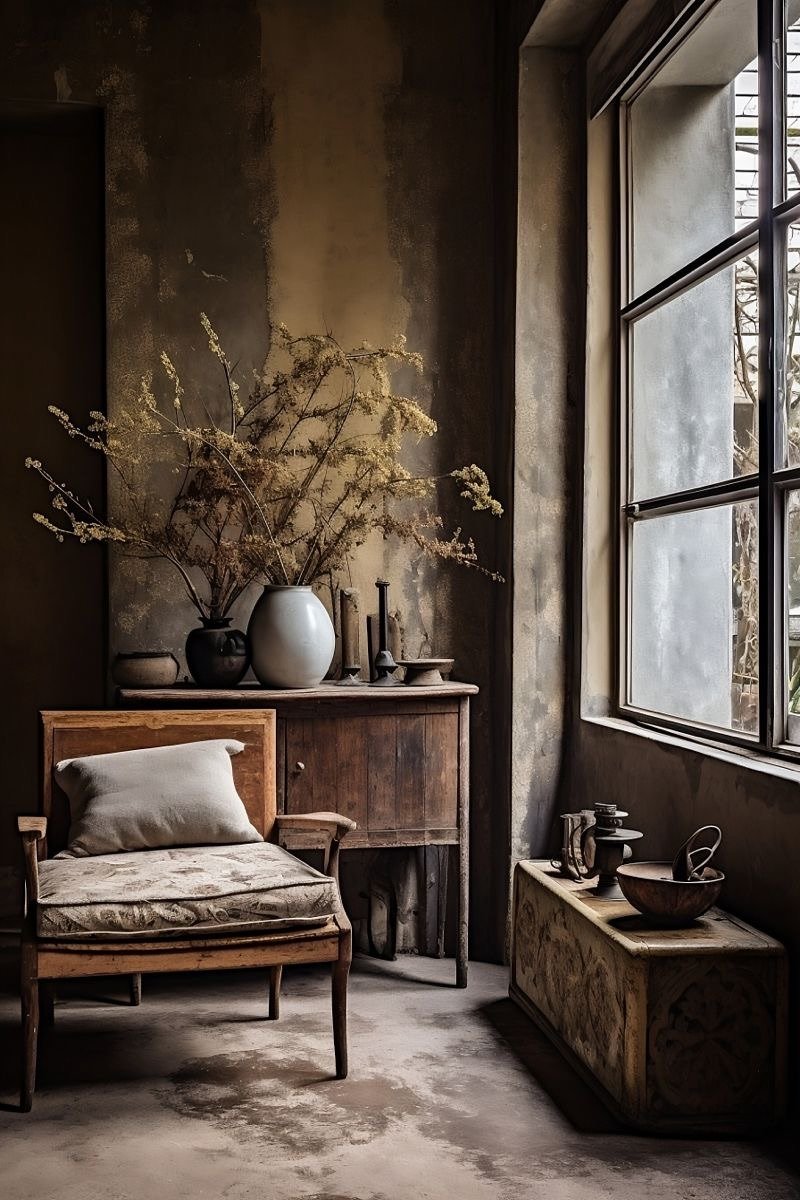
Japanese Wabi-Sabi style often employs special artistic lacquers to create an ephemeral beauty and tranquil ambiance within the space.
Antique or vintage furniture
Japanese Wabi-Sabi style seeks tolerance for imperfections and an effortless natural feel. Therefore, in interior decor, choosing second-hand or weathered furniture, even those showing signs of aging or with minor flaws, is often preferred as it accentuates the passage of time. However, Wabi-Sabi furniture typically favors simple designs, neutral colors, clean lines, and natural materials, minimizing the use of metallic elements, thereby preserving the natural essence advocated in Japanese style.

Japanese Wabi-Sabi style often opts for second-hand or weathered furniture, sometimes even embracing slightly weathered or imperfect pieces.
Handcrafted artisanal pieces
Japanese Wabi-Sabi style stands distinct from Japanese Zen and Muji styles by emphasizing the creation of a sense of humanistic artistry, aiming to fill the interior with the memories and warmth of its inhabitants. Hence, the placement of DIY handicrafts such as ceramics, woven hemp items, or arrangements featuring dry branches and flowers showcases a unique personal aesthetic while creating the distinctive ambiance characteristic of Wabi-Sabi style.

Wabi-Sabi style emphasizes cultivating a sense of humanistic artistry, making it an ideal setting for the placement of handmade crafts.
Earthy color palettes
Japanese Wabi-Sabi style often utilizes earthy tones for wall paint, such as beige, chai, or brown, creating a warm ambiance in living rooms, dining areas, or bedrooms. These primary color schemes complement the common use of wicker, linen materials, enhancing the overall space with a sense of harmony among various textures.
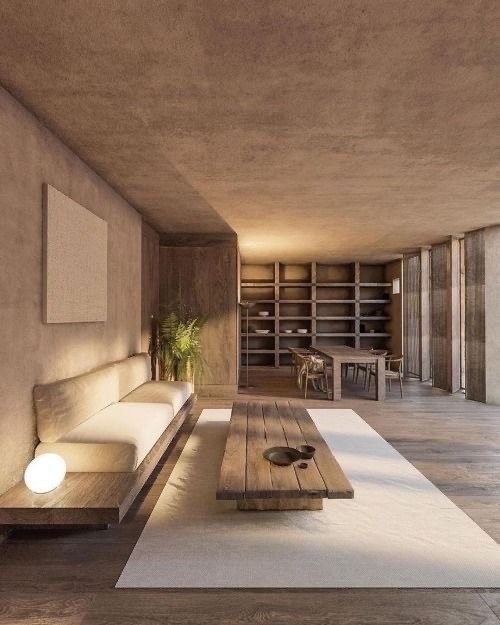
Japanese Wabi-Sabi style predominantly employs earthy tones to create a warm and inviting atmosphere.
Japanese-style lighting
Japanese Wabi-Sabi style typically avoids the use of reflective surfaces or metallic materials. When choosing lighting fixtures, consider Japanese lantern pendant lights, matte finish lamps, or track lights. Opt for fixtures in black, white, gray, or earthy tones, while favoring warm-toned lighting to better accentuate the design characteristics of Japanese-style decor.
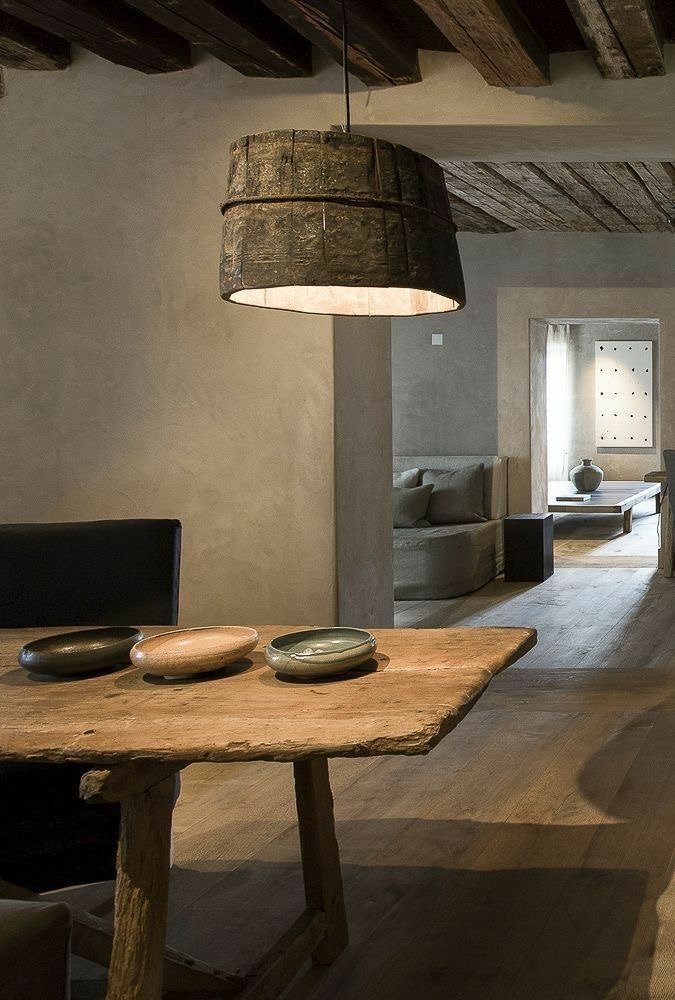
Wabi-Sabi style often incorporates Japanese-style lanterns to emphasize the unique cultural aspects of Japan.
Conclusion
Interior design styles should serve as inspiration rather than constraints. Adhering strictly to the norms of Japanese Zen or Muji style isn’t obligatory; hence, one should not feel excessively confined by the demands of a specific style during the design process. Blindly following a particular style might limit creativity in interior design, potentially compromising both the aesthetics and functionality of the space. Therefore, it’s crucial to maintain flexibility to achieve the desired and optimal interior design outcomes.

